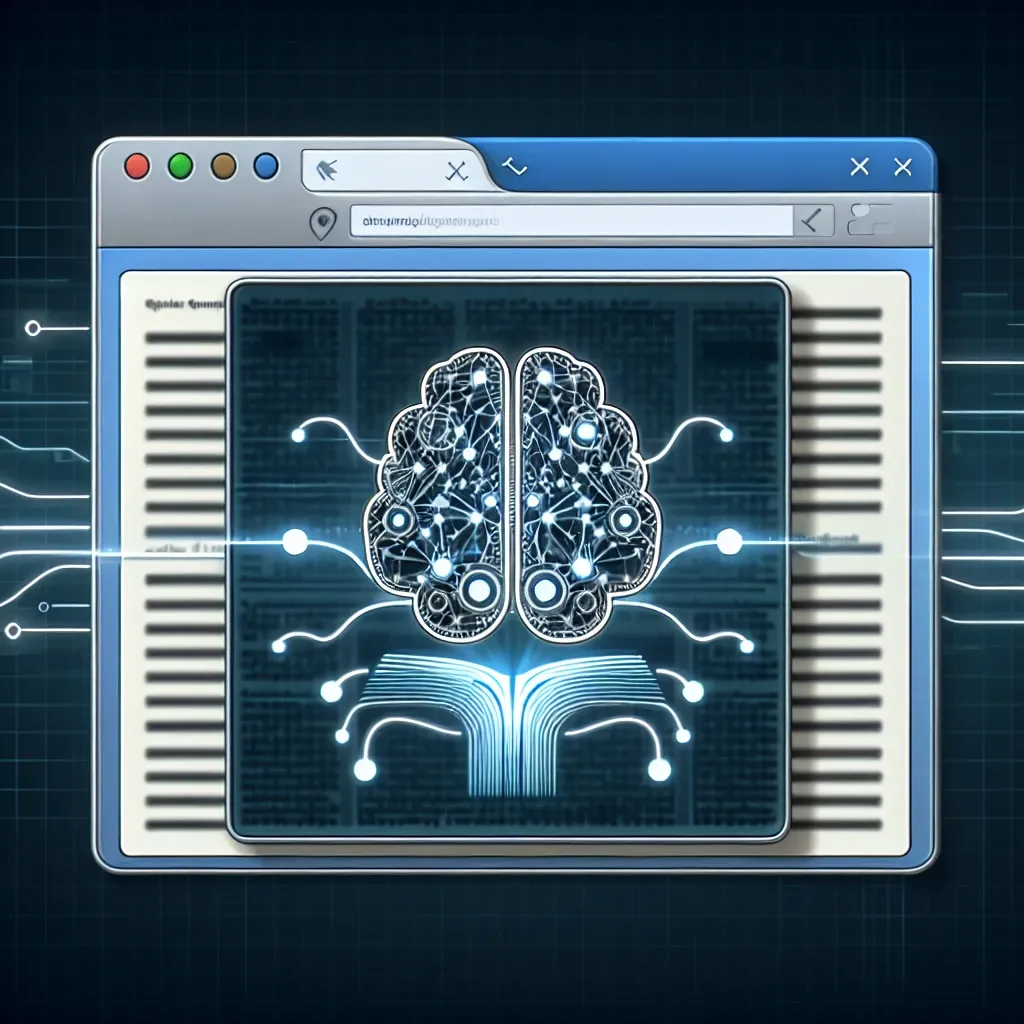Understanding the Evolution of Social Media Content Downloading
The digital landscape has transformed dramatically over the past decade, with social media platforms becoming the primary source of entertainment, news, and educational content. Twitter, now a cornerstone of real-time information sharing, hosts millions of videos, images, and GIFs that users encounter daily. However, the platform’s built-in sharing mechanisms often fall short when users want to save content for offline viewing or personal archives.
This gap in functionality has led to the development of specialized tools designed to bridge the divide between content consumption and content preservation. Among these solutions, the sssTwitter downloader has emerged as a leading platform that addresses the growing need for efficient media downloading from Twitter.
The Technical Foundation of Modern Twitter Content Extraction
Social media content downloading involves complex technical processes that operate behind the scenes. When users share videos or images on Twitter, these files are stored on Twitter’s content delivery networks (CDNs) with specific encoding formats and compression algorithms. The challenge lies in accessing these files directly without violating platform terms of service or compromising user privacy.
Modern downloading tools utilize sophisticated API interactions and web scraping techniques to identify and extract media URLs. These systems must constantly adapt to changes in Twitter’s infrastructure, ensuring consistent functionality despite regular platform updates. The process involves parsing tweet HTML structures, identifying media elements, and providing users with direct download links in various quality options.
Quality Preservation and Format Compatibility
One of the most significant challenges in social media content downloading is maintaining original quality while ensuring broad compatibility across devices and platforms. Videos uploaded to Twitter undergo compression to optimize streaming performance, but downloading tools must work with these compressed versions while providing the highest available quality to end users.
The technical architecture behind effective downloading solutions involves real-time quality detection, format conversion capabilities, and adaptive streaming protocols. These systems analyze available video resolutions, audio bitrates, and container formats to present users with optimal download options for their specific needs.
Comprehensive Platform Analysis and User Experience Design
The user experience design philosophy behind successful Twitter downloading platforms centers on simplicity without sacrificing functionality. Modern users expect intuitive interfaces that require minimal technical knowledge while providing advanced options for power users. This balance requires careful consideration of user interface elements, workflow optimization, and accessibility standards.
Effective platforms implement progressive disclosure principles, presenting basic functionality prominently while making advanced features easily discoverable. The goal is to accommodate both casual users who need quick downloads and content creators who require specific format options or batch processing capabilities.
Cross-Platform Compatibility and Mobile Optimization
As mobile device usage continues to dominate internet traffic, downloading platforms must prioritize mobile-first design approaches. This involves optimizing touch interfaces, implementing responsive layouts, and ensuring fast loading times on various network conditions. Mobile optimization extends beyond visual design to include technical considerations such as reduced bandwidth usage and efficient caching mechanisms.
The challenge of cross-platform compatibility encompasses different operating systems, browsers, and device capabilities. Successful platforms employ progressive enhancement strategies, ensuring core functionality works across all environments while providing enhanced experiences on capable devices.
Security and Privacy Considerations in Content Downloading
The intersection of content downloading and user privacy represents a critical concern in today’s digital environment. Users rightfully expect that their downloading activities remain private and that their personal information stays secure. This expectation requires implementing robust security measures including encrypted connections, minimal data collection practices, and transparent privacy policies.
Security considerations extend to the downloaded content itself. Malicious actors sometimes disguise harmful files as legitimate media, making it essential for downloading platforms to implement content scanning and verification systems. These security measures must operate without significantly impacting download speeds or user experience.
Legal and Ethical Framework
The legal landscape surrounding social media content downloading involves complex considerations of copyright law, fair use principles, and platform terms of service. Users must understand that downloading content doesn’t automatically grant rights to redistribute or monetize that content. Responsible downloading platforms provide clear guidance on legal usage while implementing measures to prevent copyright infringement.
Ethical considerations include respecting content creators’ rights and intentions. Many creators rely on platform engagement metrics and view counts for revenue generation, making it important for users to consider the impact of downloading versus engaging with content through official platform mechanisms.
Advanced Features and Functionality Spectrum
Modern Twitter downloading solutions have evolved far beyond simple video extraction. Today’s platforms offer comprehensive feature sets including batch downloading, playlist support, subtitle extraction, and format conversion. These advanced capabilities cater to diverse user needs ranging from personal archiving to professional content curation.
Batch downloading functionality represents a significant advancement in user efficiency. Content creators, researchers, and social media managers often need to download multiple files simultaneously, making bulk operations essential for productivity. This feature requires sophisticated queue management systems and resource allocation algorithms to handle multiple concurrent downloads without overwhelming server capacity.
Quality Control and Customization Options
Advanced platforms provide granular control over download parameters, allowing users to specify exact quality preferences, file formats, and naming conventions. These customization options serve professional users who require specific technical specifications for their workflows while remaining accessible to general users through intelligent default settings.
Quality control extends to audio extraction capabilities, enabling users to download audio tracks from videos in various formats and bitrates. This functionality serves podcast creators, musicians, and content creators who need high-quality audio content for their projects.
Performance Optimization and Server Infrastructure
The technical infrastructure supporting high-volume downloading platforms requires sophisticated engineering approaches to handle concurrent users and large file transfers. Load balancing, content caching, and distributed server networks ensure consistent performance across different geographic regions and usage patterns.
Performance optimization involves multiple layers including server-side processing, network optimization, and client-side caching. Successful platforms implement intelligent caching strategies that reduce server load while improving user experience through faster download initiation and reduced waiting times.
Scalability and Resource Management
As user bases grow and content volumes increase, downloading platforms must scale their infrastructure accordingly. This scaling involves both horizontal expansion (adding more servers) and vertical optimization (improving efficiency of existing resources). Cloud-based architectures provide flexibility in resource allocation while maintaining cost effectiveness.
Resource management extends to bandwidth optimization, ensuring that high-volume downloading doesn’t impact platform performance for other users. Sophisticated queuing systems and priority algorithms help manage resource allocation during peak usage periods.
User Support and Community Engagement
Effective customer support represents a crucial differentiator in the competitive landscape of downloading tools. Users encounter various technical challenges, from browser compatibility issues to network connectivity problems, requiring responsive and knowledgeable support systems.
Community engagement goes beyond traditional support to include user education, feature request collection, and platform improvement initiatives. Active communities provide valuable feedback that drives platform development while creating ecosystems of user-generated solutions and troubleshooting resources.
Documentation and Educational Resources
Comprehensive documentation serves both new users learning platform basics and advanced users exploring complex features. Effective documentation includes step-by-step tutorials, troubleshooting guides, and technical specifications presented in accessible formats.
Educational resources extend to broader topics including digital literacy, copyright awareness, and content creation best practices. These resources position downloading platforms as valuable educational tools rather than simple utility services.
Industry Trends and Future Development Directions
The social media downloading industry continues evolving in response to changing platform policies, user needs, and technological capabilities. Emerging trends include artificial intelligence integration for content categorization, blockchain-based content verification, and enhanced privacy protection measures.
According to recent industry analyses from Statista, social media usage continues growing globally, with video content representing an increasingly dominant share of platform engagement. This trend suggests sustained demand for downloading solutions while highlighting the need for continued innovation in feature development.
Future development directions include integration with content management systems, enhanced collaboration features, and improved automation capabilities. These developments aim to serve evolving user needs while maintaining the simplicity and reliability that define successful downloading platforms.
Emerging Technologies and Integration Opportunities
Artificial intelligence and machine learning technologies offer significant opportunities for enhancing downloading platform capabilities. Potential applications include automatic content categorization, duplicate detection, and personalized recommendation systems that help users discover relevant content.
Integration opportunities with other digital tools and platforms create ecosystem approaches that provide comprehensive content management solutions. These integrations might include cloud storage services, social media management tools, and content creation platforms.
Comparative Analysis of Platform Capabilities
The landscape of Twitter downloading solutions includes various approaches and feature sets, each targeting different user segments and use cases. Understanding these differences helps users select appropriate tools while highlighting the innovation occurring within this specialized software category.
Platform differentiation occurs across multiple dimensions including user interface design, feature comprehensiveness, performance characteristics, and pricing models. Some platforms prioritize simplicity and ease of use, while others focus on advanced features and customization options.
Performance Benchmarking and Quality Metrics
Objective performance evaluation involves multiple metrics including download speed, success rates, quality preservation, and system reliability. These metrics provide quantitative foundations for comparing different solutions while helping users make informed decisions based on their specific requirements.
Quality metrics extend beyond technical performance to include user satisfaction, support responsiveness, and feature development velocity. Comprehensive evaluation considers both quantitative measurements and qualitative user experience factors.
Best Practices for Content Management and Organization
Effective content management extends beyond the downloading process to include organization, storage, and retrieval systems. Users who regularly download social media content benefit from implementing structured approaches to file naming, folder organization, and metadata management.
Digital asset management principles apply to downloaded social media content, requiring consideration of storage capacity, backup strategies, and long-term accessibility. These considerations become particularly important for professional users who build extensive content libraries over time.
Workflow Integration and Productivity Enhancement
Integrating downloading activities into broader content creation and management workflows enhances overall productivity while reducing manual effort. This integration might involve automated sorting systems, cloud synchronization, and collaboration tools that facilitate team-based content projects.
Productivity enhancement through downloading tools extends to time management, enabling users to consume content offline during commutes or in locations with limited internet connectivity. This capability proves particularly valuable for professionals who need to review content during travel or in remote locations.
Troubleshooting Common Issues and Technical Solutions
Users frequently encounter various technical challenges when downloading social media content, ranging from browser compatibility issues to network connectivity problems. Understanding common issues and their solutions empowers users to resolve problems independently while maximizing platform effectiveness.
Browser-related issues often stem from security settings, extension conflicts, or outdated software versions. Modern downloading platforms implement compatibility checks and provide specific guidance for different browser configurations to minimize these problems.
Network and Connectivity Considerations
Network-related challenges include slow download speeds, connection timeouts, and geographic restrictions. These issues require different approaches ranging from server selection options to retry mechanisms that handle temporary connectivity problems.
Understanding network optimization techniques helps users maximize download performance while minimizing bandwidth usage. These techniques include timing downloads during off-peak hours, using wired connections when possible, and managing concurrent download quantities.
Professional Applications and Commercial Use Cases
Professional users leverage Twitter downloading tools for various commercial and educational purposes including market research, content analysis, and educational material development. These applications require understanding both the capabilities of downloading platforms and the legal frameworks governing commercial content usage.
Market research applications involve collecting and analyzing social media content to understand trends, consumer sentiment, and competitive positioning. This analysis requires efficient downloading capabilities combined with content organization and analysis tools.
Educational and Research Applications
Academic researchers and educators use social media downloading tools to preserve content for analysis, create educational materials, and document social phenomena. These applications often require specific features including metadata preservation, batch processing, and long-term storage considerations.
Research applications must navigate complex ethical and legal considerations including consent, privacy protection, and institutional review board requirements. Understanding these requirements helps researchers use downloading tools appropriately while maintaining ethical standards.
Platform Reliability and Service Continuity
Service reliability represents a fundamental requirement for users who depend on downloading capabilities for professional or personal projects. Reliable platforms implement redundant systems, regular maintenance schedules, and transparent communication about service status and planned updates.
Continuity planning involves preparing for various scenarios including platform policy changes, technical infrastructure updates, and increased usage demands. Successful platforms maintain service availability while adapting to changing external conditions and user requirements.
According to digital infrastructure reports from Cloudflare, modern web services must maintain 99.9% uptime to meet user expectations, requiring sophisticated monitoring and response systems that detect and resolve issues before they impact user experience.
Backup and Recovery Systems
Robust backup and recovery systems ensure that downloading platforms can maintain service continuity even during unexpected technical problems. These systems include data replication, automated failover mechanisms, and rapid recovery procedures that minimize service interruptions.
Recovery planning extends to user data protection, ensuring that user preferences, download histories, and account information remain secure and accessible even during system maintenance or upgrades.
Cost-Effectiveness and Value Proposition Analysis
Evaluating the cost-effectiveness of downloading platforms involves considering both direct costs and indirect benefits including time savings, productivity improvements, and access to otherwise unavailable content. This analysis helps users make informed decisions about platform selection and usage patterns.
Value proposition analysis extends beyond simple cost comparisons to include feature comprehensiveness, reliability factors, and long-term sustainability considerations. Users benefit from understanding the total cost of ownership including potential switching costs and learning curve investments.
Return on Investment Considerations
Professional users can quantify return on investment through metrics including time savings, content acquisition costs, and productivity improvements. These measurements provide objective foundations for evaluating platform effectiveness while justifying technology investments to organizational stakeholders.
Investment considerations include both immediate benefits and long-term value creation through improved content management capabilities, enhanced workflow efficiency, and expanded content access opportunities.





